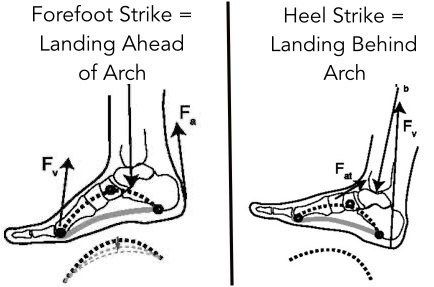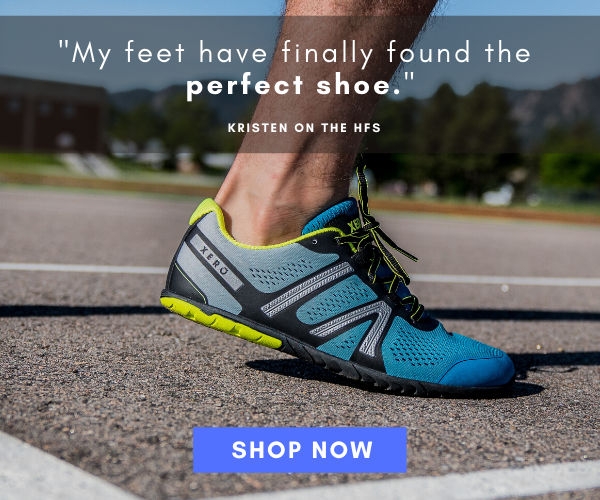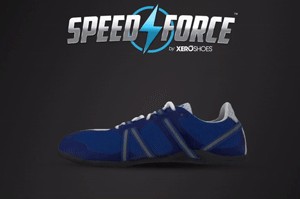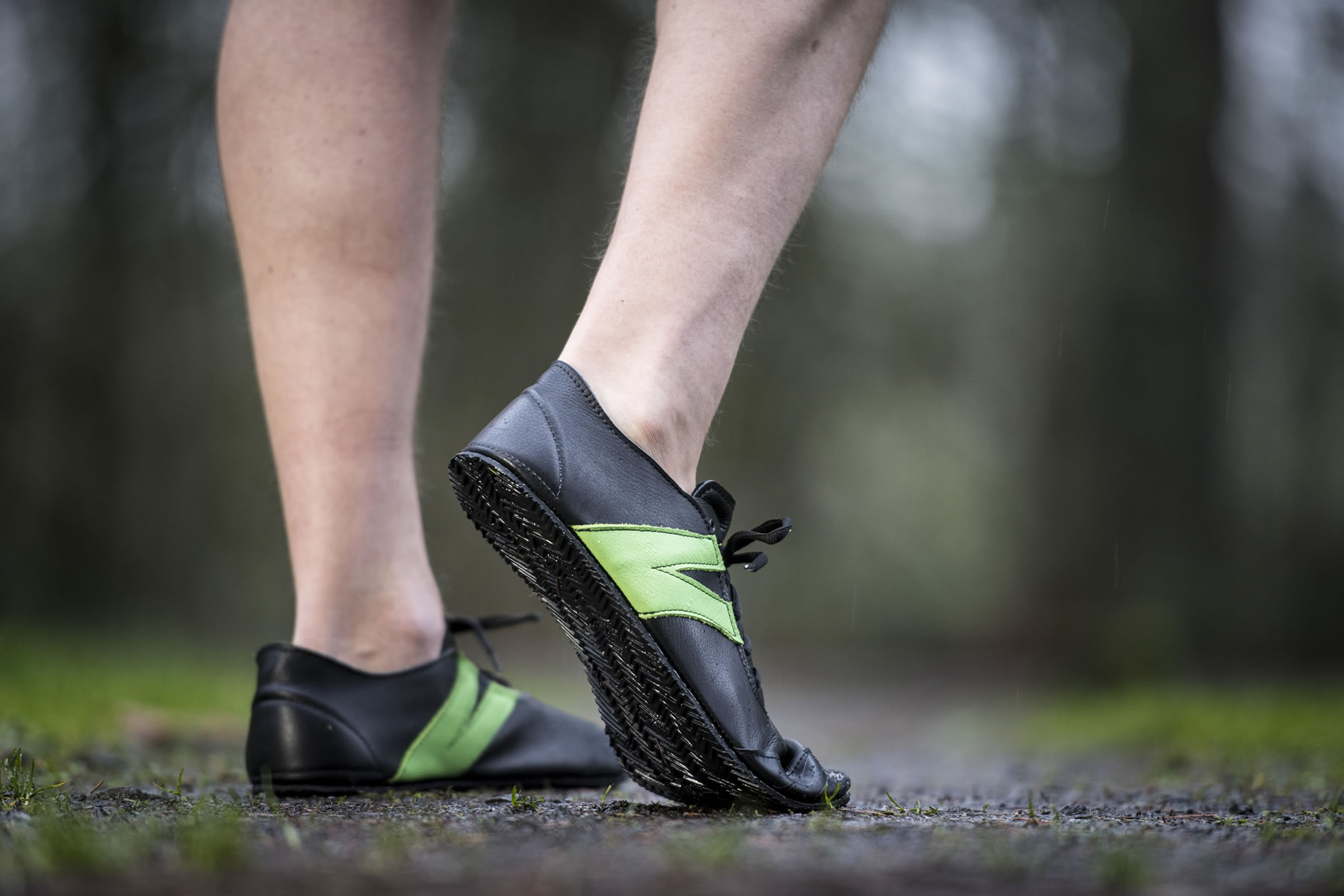For some strange reason, there’s a theory that changing from heel strike to forefoot strike running is a major risk factor for Achilles tendon injury because the Achilles works mechanically different in a forefoot strike landing vs in a heel strike landing. But, is this difference really a risk factor for injury? It turns out that switching to forefoot running poses no risk of damage to the Achilles, and even better, the Achilles plays a more active role as an energy-saving spring, helping the foot to spring up with less muscle effort vs heel strike running!


One study (references below article) found that forefoot runners who ran barefoot, or in minimalist footwear were less likely to suffer an Achilles tendon injury compared to heel strike runners.
Another study revealed that peak Achilles tendon force was not greater among barefoot-forefoot runners than barefoot-heel strike runners, and the difference in Achilles loading between the two groups was not statistically significant.
In the same study, the barefoot-heel strike runners showed greater tibialis (shin) anterior muscle activity during the stance phase of running, which may exhaust the connective tissue surrounding the tibia and increase the incidence of anterior shin splints.
The Take Home Message
If you follow the evidence, its been made very clear that one of the best changes to your running form is the forefoot strike because it poses no outsized risk for Achilles injury, and forefoot striking may actually be a mechanical imperative that allows the Achilles to function the way it was intended to function as a spring. Not just that, the Achilles avoids high compressive loads altogether in forefoot running, which is another major advantage for reducing injury to the tendon.

Most consequential, heel strike running is a very significant producer of heavy compressive and mechanical loads, not just on the Achilles, but the shins, too which is why shin splints is notoriously prevalent in heel strike running. Read more here on how heel strike running causes shin splints, and even shin fracture.
Also, heel striking goes against the natural functional spring behaviour of the Achilles tendon, resulting in diminishing returns in the elastic energy needed to reduce muscle energy as compared with forefoot running. Read more here on that!

References:
Almonroeder, T., Willson, JD and Kernozek, TW. The effects of foot strike pattern on achilles load during running. Ann Biomed Eng, 2013; 41(8):1758-66.
Goss DL and Gross MT. Relationships among self-reported shoe type, footstrike pattern, and injury incidence. US Army Med Dep J, 2012, 12:25-30.
Shin, Y and Shaig, TY. Is the foot striking pattern more important than barefoot or shod conditions? Gait & Posture, 2013; 38(3):490-94.
If you’d like, you can support Run Forefoot and help keep it going by making a donation in any amount of your choosing:

Or, you can support Run Forefoot by shopping at the BEST Barefoot Shoe Brands, and be sure to bookmark these links 🙂
Lonowear: https://lonowear.com/?ref=cedsholh
Saguaro: https://www.saguaro.com/?ref=9bVA8fEkmDvB-I
Vibram FiveFingers: https://www.anrdoezrs.net/click-7600968-11372648
Vivobarefoot: https://amzn.to/3vycQOY
Be Lenka: https://www.tkqlhce.com/click-7600968-13947200
Xero Shoes: https://xeroshoes.com/go/Run_Forefoot
Iguaneye: https://www.iguaneye.com/?ref=8tfXVc92
Soft Star Shoes: https://shrsl.com/3mp1b
Wilding Shoes: https://bit.ly/3lIygQP

Bretta Riches
BSc Neurobiology; MSc Biomechanics candidate, ultra minimalist runner & founder of RunForefoot. I was a heel striker, always injured. I was inspired by the great Tirunesh Dibaba to try forefoot running. Now, I'm injury free. This is why I launched Run Forefoot, to advocate the health & performance benefits of forefoot running and to raise awareness on the dangers of heel striking, because the world needs to know.
Latest posts by Bretta Riches (see all)
- Can You Run In Barefoot Shoes? Yes, But DON’T Heel Strike! - 21/07/2024
- Why Cushioned Running Shoes Are Really Bad for Your Feet - 19/07/2024
- Do Cushioned Running Shoes Cause Injuries? - 17/07/2024
